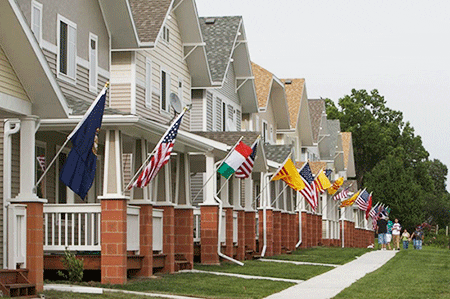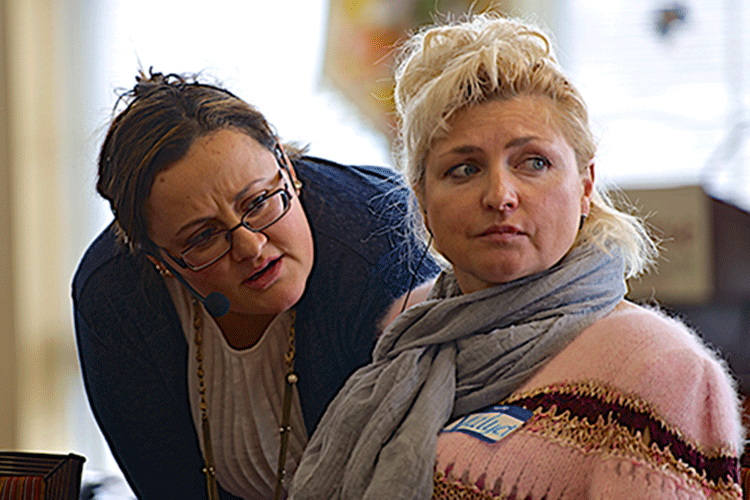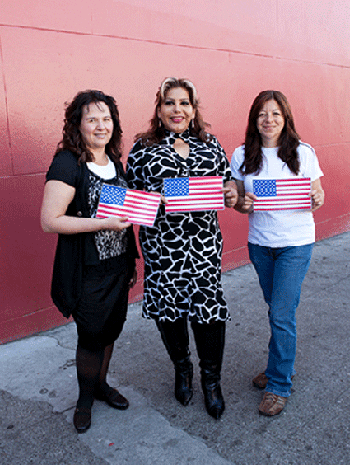Knowing that nearly 10,000 Vietnamese families live in Lincoln, Nebraska, I hired Andy Vu, a Vietnamese real estate agent, to represent my building company. At first, he had difficulty selling my floor plans to his countrymen, but one day, he began moving houses at an extraordinary clip. I thought that the good Vietnamese people of Lincoln had suddenly wised up and realized the value of my homes—but I was wrong.
Without telling me (to avoid offense), Vu had hired a Vietnamese remodeling contractor to adapt my homes to Vietnamese cultural tastes. For an extra $3,500, the contractor would retrofit an outdoor-vented range hood and erect walls around the kitchen so that it wouldn’t remain open to the family room. When I got wind of this, I asked Vu to make a list of all Vietnamese preferences so that we could design a plan to suit them better.
By asking around, I discovered that some other ethnic groups in Lincoln also disliked the standard North American floor plan. I arranged a series of lunches with friends from various cultures and asked them what they wanted in a house. Soon, I had a list of cultural preferences by nationality. I couldn’t design a house for each cultural group from Iraqi to Iroquois, but I could combine elements into a handful of multicultural models.
A Booming Population
If the Census Bureau is right, immigrants and native minorities will account for half the U.S. population by the year 2050. The increasing size and affluence of North America’s multicultural community also defines the biggest growth segment for homebuilders and remodelers. According to a report by the Joint Center for Housing Studies at Harvard University, minorities may represent nearly half of all new homebuyers in the coming decades.
In cosmopolitan areas such as Miami, Chicago, Los Angeles, and San Francisco, lenders, real estate companies, and major builders have grasped the situation and are trying to cater to this multicultural niche. Banks are setting up minority lending services, real estate firms are hiring bilingual agents, and builders are merchandizing their models for the multicultural market.
These accommodations are not motivated by fair housing laws, but rather by the realization that those who pay attention to emerging markets will thrive; those who don’t, won’t.
You Must Do Your Homework
Serving the multicultural market involves more than hiring bilingual sales agents and translating a few documents. It means understanding that the American Dream does not look the same to everyone: Different cultures want different styles of housing.
Immigrants don’t necessarily covet the wide-open floor plan with a kitchen facing the family room. Some cultures prefer an enclosed, well-ventilated kitchen. Others require two living rooms so that men and women can socialize separately. The Vietnamese families I work with want a kitchenette in the garage or on the back porch for summer cooking. With several generations often under one roof, Latinos prefer more bedrooms instead of a palatial master suite.
My Arab clients want a separate room for the toilet because in the Middle East, lavatory and latrine functions don’t belong in one room, any more than a urinal would not belong next to the kitchen sink. And in a house for Muslims, a toilet cannot be positioned in the direction of Mecca.
Some cultural preferences can be less obvious and more complex than simple room arrangements. For instance, to cope with the complex site and architectural requirements dictated by feng shui and the vastu shastra of India, a contractor must hire a skilled consultant. This expert determines how energy should flow through a home to promote health and fortune.
Working with the architect, these consultants can help to identify and mitigate undesirable lot characteristics, and recommend architectural features that make homes easier to market.
These features don’t cubbyhole a particular cultural group or exclude another, and the goal is not to build grass huts or pagodas, but to build modern American housing that accommodates modern Americans—who are not necessarily white.
Multicultural Design Pays Dividends
For builders who grasp the marketing potential of including multicultural features, the rewards can be significant: a loyal clientele that fuels repeat sales by word of mouth promotion. I have met many real estate agents who say that having served one ethnic client gave them an entrée to an entire community.
In Nebraska, where the immigrant population has grown from 5 percent to nearly 15 percent within a decade, I have found a profitable niche catering to new Americans’ dreams—though I fell into it nearly accidentally.
One might think this sort of culturally sensitive design preference applies only to first generation immigrants, but I have found that even second and third generation immigrant families enjoy architecture that respects their heritage. Home is the only place where a family can express its culture without inhibition, and so creating an environment that respects every American’s dream expresses not only my goodwill, but good business sense.
Good Urbanism
A planner’s motivation is to provide stability to neighborhoods, achieved by residents staying put and building a life. For the multicultural community, this requires developing cross-cultural community ties and setting deep new roots in new soil.
In my Liberty Village project, which included 24 homes with ten different nationalities represented, a new version of the modern American Neighborhood sprung to life spontaneously. Residents enjoyed homes that respected their individual culture, and came to appreciate the special characteristics of other cultures. During the opening ceremonies at this development, we provided every resident two flags to display on their front porch, the flag of the United States and the flag of their country of origin. The garages of these homes open onto a common, rear alley. Every garage door was open with a buffet of each family’s favorite ethnic dishes for all neighbors to sample, from Kimchi to Empanadas.
This was in 2007, and I recently returned to Liberty Village to find the neighborhood preserved—only one home had changed hands. The neighborly relations initiated during the opening ceremony, in which the development embraced its multicultural identity, had continued to grow and matured into stable friendships. The kind of friendships that contribute to stable families and neighborhoods.
The neighborhood surrounding the development, which had originally opposed the project, now regards it with community pride, and a sister development of similar nature is under construction a few blocks away.






Comments